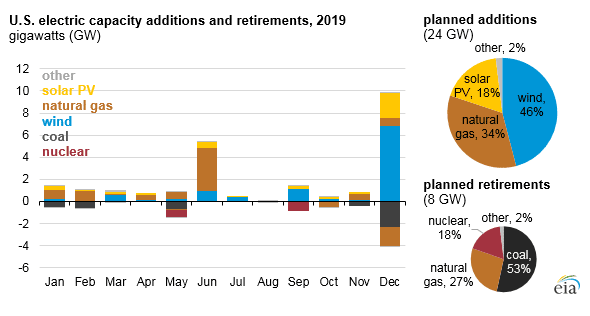In 2019, the U.S. is expected to add 23.7 gigawatts of generation capacity and retire 8.3 gigawatts, according to a Jan. 10 report from the U.S. Energy Information Administration. About 8 gigawatts of coal, nuclear, and natural gas generation are scheduled to retire this year, with coal accounting for 53 percent of the retirements.
- Texas, Iowa, and Illinois will be home to more than half of the wind capacity additions totaling 10.9 gigawatts, while most of the 4.3 gigawatts of utility-scale solar photovoltaic additions will occur in Texas, California, and North Carolina.
- Most of the natural gas capacity, scheduled to come online by June, ahead of the high summer demand, will be in Pennsylvania, Florida, and Louisiana.
- Expected retirements include Arizona’s 2.3-gigawatt Navajo coal-burning power plant, Entergy Corp.’s 680-megawatt Pilgrim nuclear power station in Massachusetts, and Exelon Corp.’s 837-megawatt Three Mile Island nuclear power plant in Pennsylvania.
- The 4.5 gigawatts of coal-fired capacity planned to retire this year is relatively small compared with the estimated 13.7 gigawatts that closed in 2018, which marked the second-highest amount of coal capacity retirements in a year.






